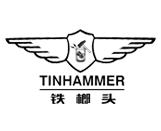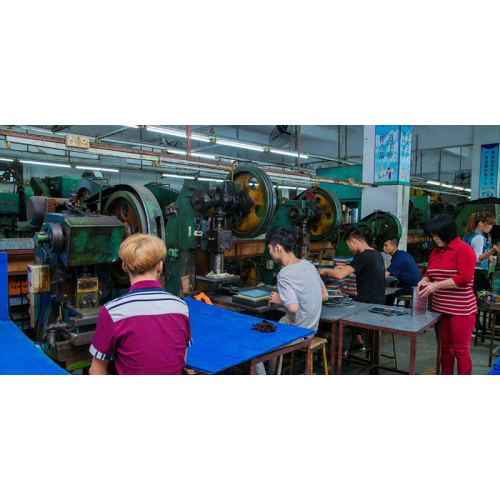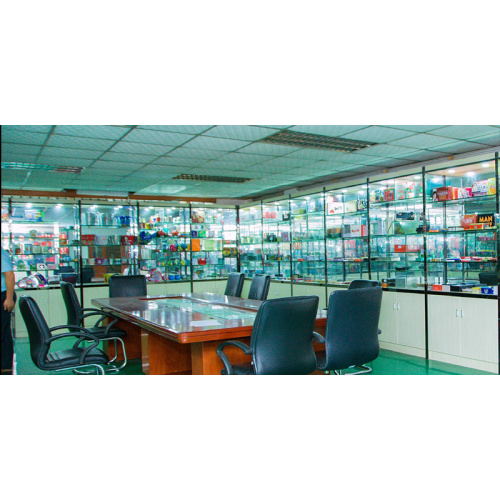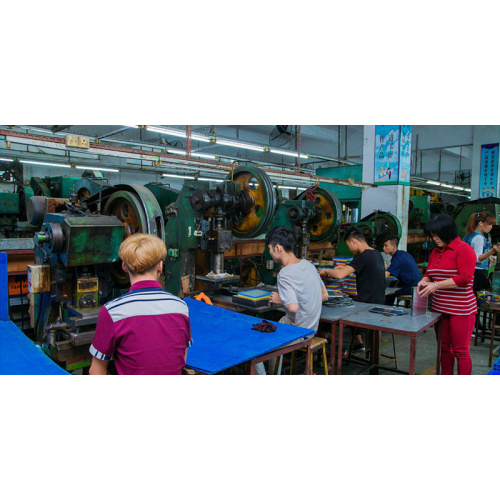2. Design requirements for screen printing of metal packaging
The most important thing for any job is the initial basic work. The design with screen printing as the main process, in addition to following the principles of economy and practicality, should also focus on the combination of science and craftsmanship. To ensure that the content is accurate and the layout is reasonable, appropriate decorative patterns are added to organically link the characteristics of screen printing with the aesthetics and the optical color of the material, and become an important design concept for making packaging appearance with the screen printing process. .
(1) Since the screen brush is not easy to express the effect of subtle lines, it is necessary to leave free space or overlapping parts at the two colors adjacent or at the junction, and the width of the lines and the size of the handwriting also exceed the maximum resolution of the platemaking 0.1. Mm or more.
1 In the design of color printing, the outside frame size should be as large as possible to ensure that the size and shape of the inner frame are accurate, so as to ensure that the frame does not touch the inner frame when the screen is closed.
2 When the adjacent color areas do not require space, they must be designed separately, and two rows of lights should be used. These are two differently shaped color areas, and no gaps are required in the middle.
3 At the intersection of two color blocks, it is not easy to print very well. This situation can be compensated by overlapping design methods. This also needs to design the secondary emission separately. The surrounding area of the patch area should be slightly larger than that required by the drawing. In other words, when the two colors are adjacent, the light area is designed to be printed first, and the dark area is printed afterwards. Light color to prevent gaps in the middle.
(2) If there are more appearance requirements, whether it is the use of multi-level overprinting or multiple color screen printing, it will make the layout appear cluttered, although colorful, but lost the sense of elegance and dignity. According to the principle of darkness in the dots, the neighboring parts of the complex area are printed in the same color in different sizes, different shapes, or different densities, and they are changed in agreement. As a design, a row of photos, a print, so reducing the multiple positioning, multiple printing troubles and improve efficiency. It can not only play the role of color zoning, but also make the layout of the layout in accordance with the aesthetic style of the times, and subtly blend functional beauty with artistic beauty. Packing and printing with a proper, comfortable, strong sense of the times. Fully shows the value of the product.
(3) Emphasize the decorative effect. For those printing surfaces that are simple in content and large in space, properly accompanied by differently shaped color patches and decorative ornamentation of lines will make a few simple and boring contents vivid and lively.
(4) Select the appropriate font. Text design, Chinese, Pinyin, English, and numbers are common languages for packaging designs. The design of texts not only needs to meet the needs of content functions, but also must have good craftsmanship and aesthetics. Most of the Chinese characters use Song-style, imitation idioms, and cymbals. Chinese Pinyin letters and English mostly use masculine, long, and other ligatures, and flat ligatures. Numbers are the most common symbols. The ratio of height and width directly affects the recognition effect. Height: Width is generally (5:3) ~ (3:2). Commonly used Song fonts, due to the square shape, the pen front is obvious, horizontal and vertical uneven, the font body is printed on the metal packaging below 4.2mm, will appear thin, the title of the print is also seemingly drifting; imitation of the words in the horizontal and vertical thickness, the shuttle angle, Fine fonts, small print or title effects are very good. When the character body is above 4.8mm, the bold characters are often used. The characters are dignified, the strokes are thick, and the marks on the package are sturdy and eye-catching. When a large headline or space is large, a square typeface or a variant typeface can be used. The printed version is open, bold, and has a strong sense of calligraphy.
In short, the selection of characters should be consistent with the screen printing process characteristics. After printing, it should produce a stable, thin, easy to read, and easy to distinguish effect.
(5) Use standard symbols. Some product's nominal, commonly used English letters or all kinds of symbols, such as Kg, mm, L, Ω, φ, etc., for the sake of accuracy, we try to use standard symbols directly maps. The commonly used Chinese characters do not use handwriting. Instead, the words on the letter board are put into a positive film as required, and they are pasted on the drawings, and then turned into Yin and Yang negatives to ensure the consistency of the entire font.
(6) Seriously treat each drawing, and on the premise of respecting the wishes of users, take the initiative to negotiate artistic re-creation with users, apply mature tactics and unified image to different products, and establish their own style.
(7) Take seriously the weak links in overprinting patterns. The level of craftsmanship is the technical basis for guaranteeing and representing the level of design. It is also the creation of the beauty of the product's texture, thereby enhancing the protection of the formal beauty. Therefore, screen printing should also prevent rough fabrication and damage the appearance of the image. It is often found that different manufacturers print different products on the same film. There are technical differences, there are differences in color matching, material selection, and more is the difference in the quality of the process.
(8) According to the user-supplied design sketches, perform positive drawing, engraving or mapping, and then make a plate. Since the microcomputer has been used in the design of the system, the microcomputer design is used. The light drawing version is a relatively advanced technique, and the size of the design is also relatively accurate. If there is no advanced equipment, drawing, mapping, engraving, etc. can also be used for less demanding products.
Third, metal packaging screen printing quality characteristics and requirements
Metal packaging screen printing, from its technical point of view, the printed pattern, lines must be clear, full ink, which is related to the choice of silk screen mesh, stretching tension, printing pressure, printing speed, ink viscosity and a series of Print data.
1, carefully select the wire mesh
According to the printed characters, lines determine the screen, generally 300 ~ 350 mesh screen. Using a screen with more than 350 mesh, although a good printing effect can be obtained, due to the ink layer being too thin, the corrosion resistance of the diamond plate may not be strong in the subsequent processes. The selected wire mesh is tensioned under 8 tensions, and the glued net frame and the plastic surface are inversely stretched by being laid upside down on the stretched screen surface. The purpose is to stretch several meshes at the same time and save the mesh. The frame can also be discharged at any angle, avoiding right-angle stretch nets and reducing the odds of jagging during printing.
2, stretch net
When printing general graphics, manual stretch netting can be used completely, which saves money and saves labor. For printing more complex or detailed graphics, the web tension first affects the printing accuracy, the tension is too small, and the consequences are almost always unclear. Therefore, mechanical or pneumatic stretch nets must be used. When stretching the net, the tension of the net must be gradually increased. The required tension cannot be pulled once. The mesh should be leveled evenly. When the tension is reached, it should be held for a few minutes before sticking to the web, and then glued. Stretch a good network is best to stand for 3 to 4 days, flat on the desktop or other places not easy to touch, until the tension can be used evenly.
3, screen degreasing treatment
Rinse the screen with running water, apply detergent powder or dishwashing to both sides of the screen, scrub it with a brush, and not only achieve the purpose of finger removal, but also roughen the screen. Alkaline detergent on the net must be flushed under running water, otherwise it will affect the quality of the plate.
4, drying
Place the washed wire mesh in a dry and ventilated place or in a drying oven. The drying degree should not be too high, so as not to affect the deformation of the wire mesh.
5, plate making
As screen printing requires a clear pattern and characters. Full ink, which requires the production of high-quality screen. First of all, two situations should be excluded: The first is that the photosensitive film is too thin, the printed pattern, lines are not only unclear, but also serrated, line sprinkled, rounded corners blunt; the second is the photosensitive film is too thick, despite the printing When a lot of pressure was added, the ink layer was still very thin and the lines were severely broken and could not withstand the corrosion of potions. Therefore, the thickness of the photosensitive film on the 350-mesh screen is preferably ideal for the 224-squeegee method. Among them, the speed of squeegee and the inclination of the squeegee are also major factors affecting the film thickness. Squeegee speed can not be fast, slowly move the scraper, not only can eliminate the bubbles in the glue, but also to obtain a uniform photosensitive layer, scraper back and the angle between the screen is 25 °, when the scraping glue both hands to be even.
It is worth mentioning that the precision of the printing process using photo-sensitive adhesive plates is not as high as that of the capillary film, but the film resistance of the film is not as good as that of the photo-resist. So immediately after the application of photoresist, a polyester film is applied to the non-printing surface, scraped twice with a scraper, and bubbles are removed to prevent the occurrence of pinholes; then placed in an oven and dried at a low temperature, the temperature is controlled at 40°C. Inside; drying, remove the silk screen to remove the polyester film, and then dry it for 1 to 2 minutes to expose. This method of "changing" a film film with a photosensitive adhesive can improve screen printing accuracy.
6, exposure
Most use solar exposure. According to the photosensitizer content exposure 30 ~ 45 seconds, the exposure should be repaired before the film, dust and stains. If the screen is facing up and the frame is down, a black or blue copy paper should be placed between the pad and the screen to prevent the light from refracting, resulting in unclear patterns or difficult to develop.
7, development
The exposure should be immediately put into development. Soak the screen with warm water at 30°C for 1~2 minutes until the unexposed film swells with tap water until the pattern is clear.
8, drying
Absorb excess moisture with a sponge and let it dry naturally in ventilated sunlight or dry in an oven at 40°C.
9, revision and closure network
Proof correction with the film, closed mesh outside the pattern and drying, can be delivered to the printing process.
10, printing
Use self-drying corrosion-resistant printing ink to keep the distance between the screen and the surface of the metal package 3~4mm; the scraper is required to be sharp, straight, and not nicked, and the ink is scraped from front to back. Scraper tilted 45 ° angle, parallel, not too fast to scrape ink. Try printing about 10 times, if the amount of ink is normal, the pattern is clear, you can print in batches. In order to reduce the workload of the patched version, it is best to check the print quality every time it is printed 10 times in order to promptly correct it. Due to the dryness of the environment and the serious dust, white spots and lines appear on the printing plate, which is mainly caused by dust sticking on the web and particles in the ink. Apply an appropriate amount of thinner to the dirt. After printing, the screen should be cleaned in time. Propionic acid cleaning fluid is generally preferred. When the skin is stimulated, the ink sticking to the web is easy to wash. Cleaned screens should be packaged in a timely manner and properly placed for reuse.
11, the overhaul of the printing
The printed seals cannot be directly corroded. After the ink is completely dry, the deficiencies in the printing are carefully and overhauled; the places to be filled are repaired with plate-making glue, and the character is unclearly modified with a stylus; Check, mutual investigation, special investigation, minimal control of print quality deficiencies, and then can be transferred to the next process.
12, rational selection of ink
Layered multi-color overprinting, to wait until the previous color is dry enough to be sticky, only to print a color, once the latter color is broken, do not rub the background dirty. In order to ensure the finished product rate and reduce the difficulty of repairing, the ink type and the diluent are selected.
When the metal package surface color is light, UV ink can be used to add resin ink color to ensure uniform color. After the printing is cured with ultraviolet light, the color ink particles will be firmly embedded due to the curing of the UV ink, the surface will not stick, and the color will be printed immediately. The next color ink can use thermosetting metal ink, after printing heat curing. Not only can you get the ideal combination of strength and hardness, but you can also get an unexpected pearl-like background color. The general solvent will not be wiped off, and it is easy to repair.
13, pre-imprinted printing scheme, color sequence
With a test paper that is not sticky, check whether there are defects in the graphic, whether the blade is straight, whether the mesh is appropriate, and whether the ink is uniform. Try printing 2 or 3 times. After the ink is evenly eaten, print it. When printing, continuous graphics can be scraped and printed with a large scraper. For separate graphics, small scrapers of various sizes can be used for partial printing. All the nets are printed after finishing printing. A small area is easy to obtain a flat surface. The fullness of the printed text will not appear in different shades.
14, screen cleaning is very important
Residues of a few inks in the graphic text, especially repeated use of the net frame, can cause blind holes, and the degree of reproduction of the graphic text is affected, that is, printing.









